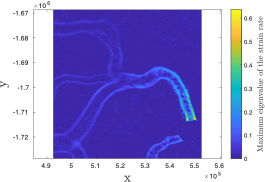More Climate and ice core research
Through 4 of my study years I have been connected to the Physics of Ice, Climate and Earth research group. This group are the main contributors and planning committee of the european ice core field work on the Greenland Ice Sheet. They work with variety within ice cores, tipping points, atmospheric and earth science as well as physical oceanography.
Bachelor project
This project looks into the Traverse in 2015 from NEEM to Eastgrip for a new ice core drilling project – Egrip. Along the traverse 6 shallow snow cores were drilled from the surface. This project analyzes the first two using stable water isotopes and chemical analysis using continuous flow analysis. The data has been acquired experimentally by cutting snow cores in the freezer, melting these for the CFA and cutting it in high-resolution samples measured on Picarro Cavity Ring-down systems using optical lasers to find values with very high sensitivities.
From these data yearly layers are found with $17 \pm 3$ years for A1 and $44 \pm 4$ year for A5. These are then compared to the chemical analysis to get more precise layers and from these, the uncertainty.
Temperature and accumulation are derived from here using the stable water isotopes to find a relation between temperature and accumulation for different locations and compare these with measured air temperatures from the ice sheet and the coast. This gives a linear relationship between temperatures and accumulation. The mean accumulation found is 26.3 cm/yr for A1 and 14.5 cm/yr for A5. This is a little bit higher than the known values of 23 cm/yr at A1 and 0.11 cm/yr for A5. The temperatures were found to be -27$^{\circ}$C for A1 and -33.5$^{\circ}$C for A5.
For future drilling sites these initial results can be used to estimate an interesting spot for the next ice core project. Along with research from other Greenland traverses of ice cores and pits, these results can be used to gather a national weather overview and how moisture, temperature and atmosphere in general move across the ice sheet.
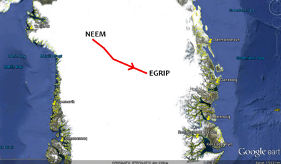
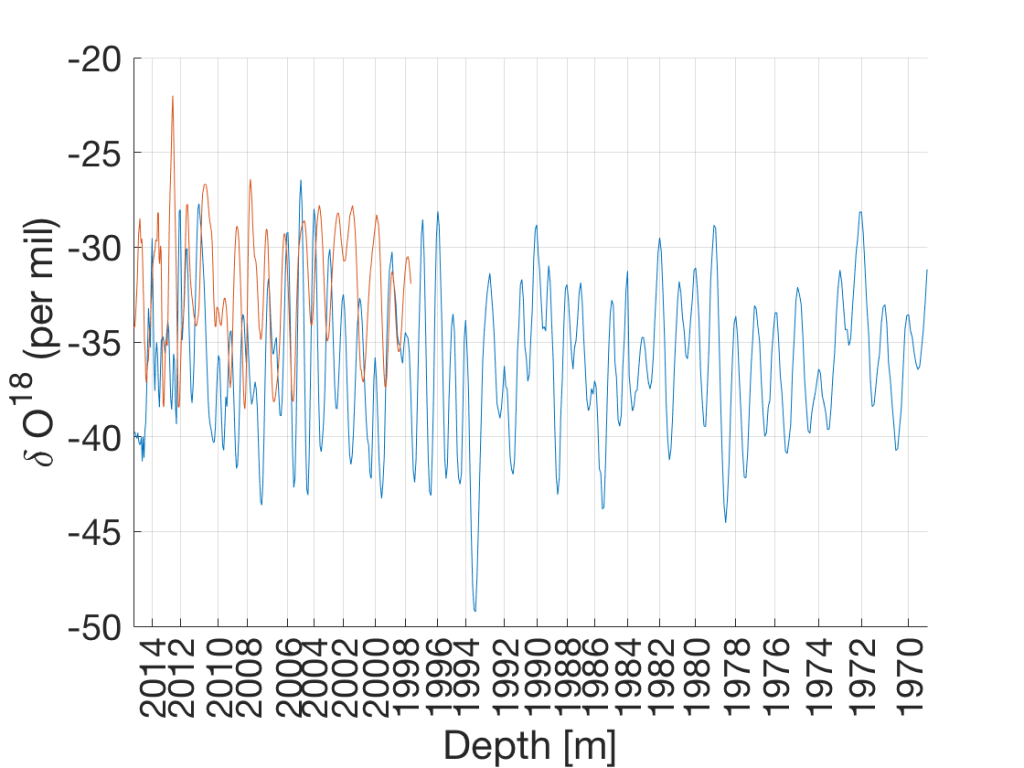
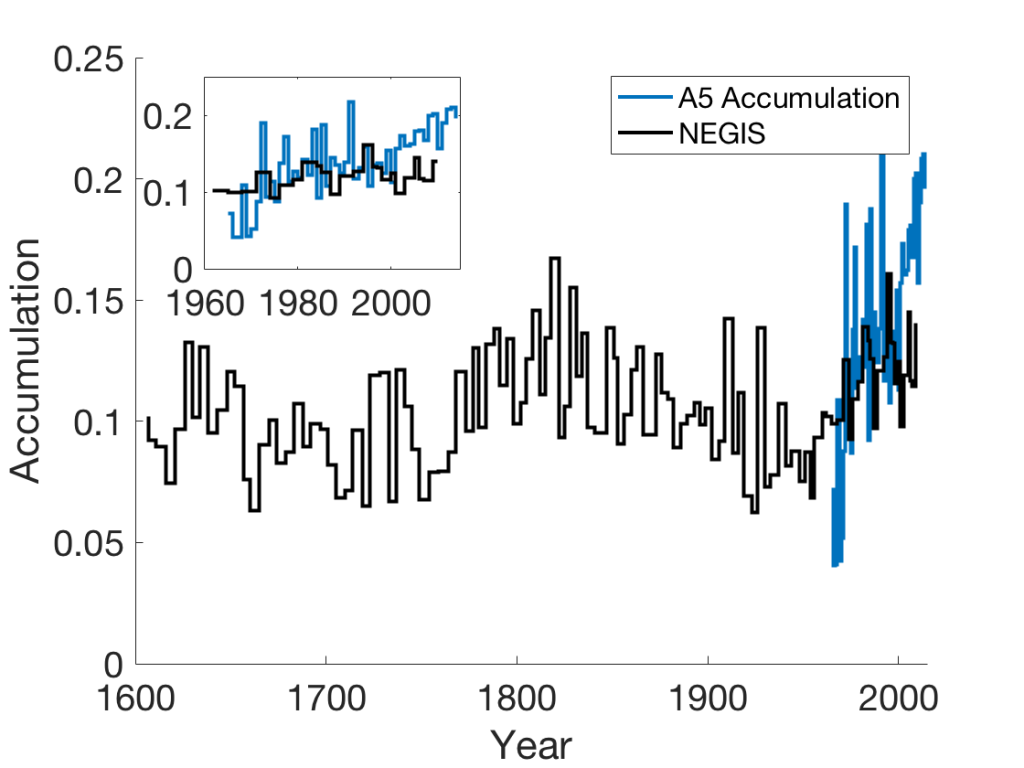
Field work
Laboratory assistent on the Greenland Ice Sheet working in the science lab by doing initial measurements of the ice core using ECM and DEP.
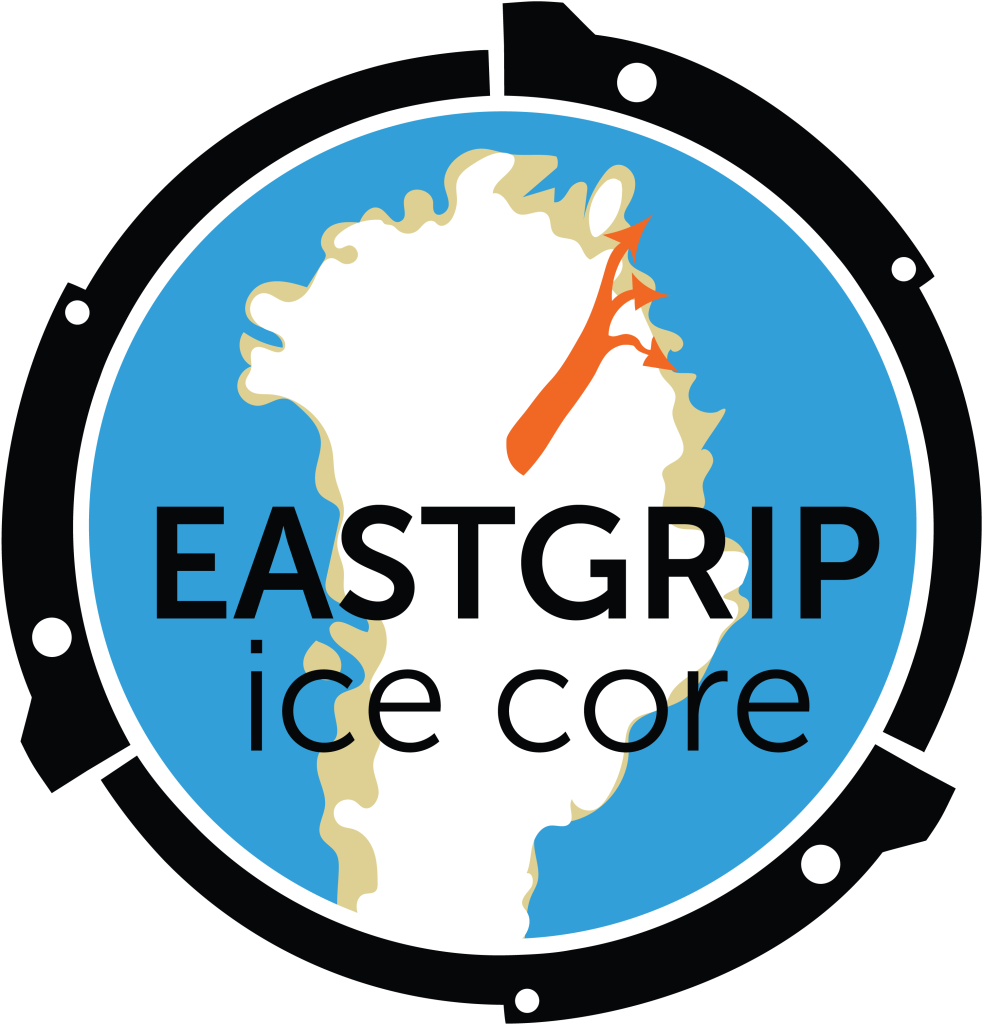
Glacier analysis
Using Glacier dynamics and modelling to analyze strain rate and surface mass balance of the Gerard de Geer Glacier, East Greenland.
